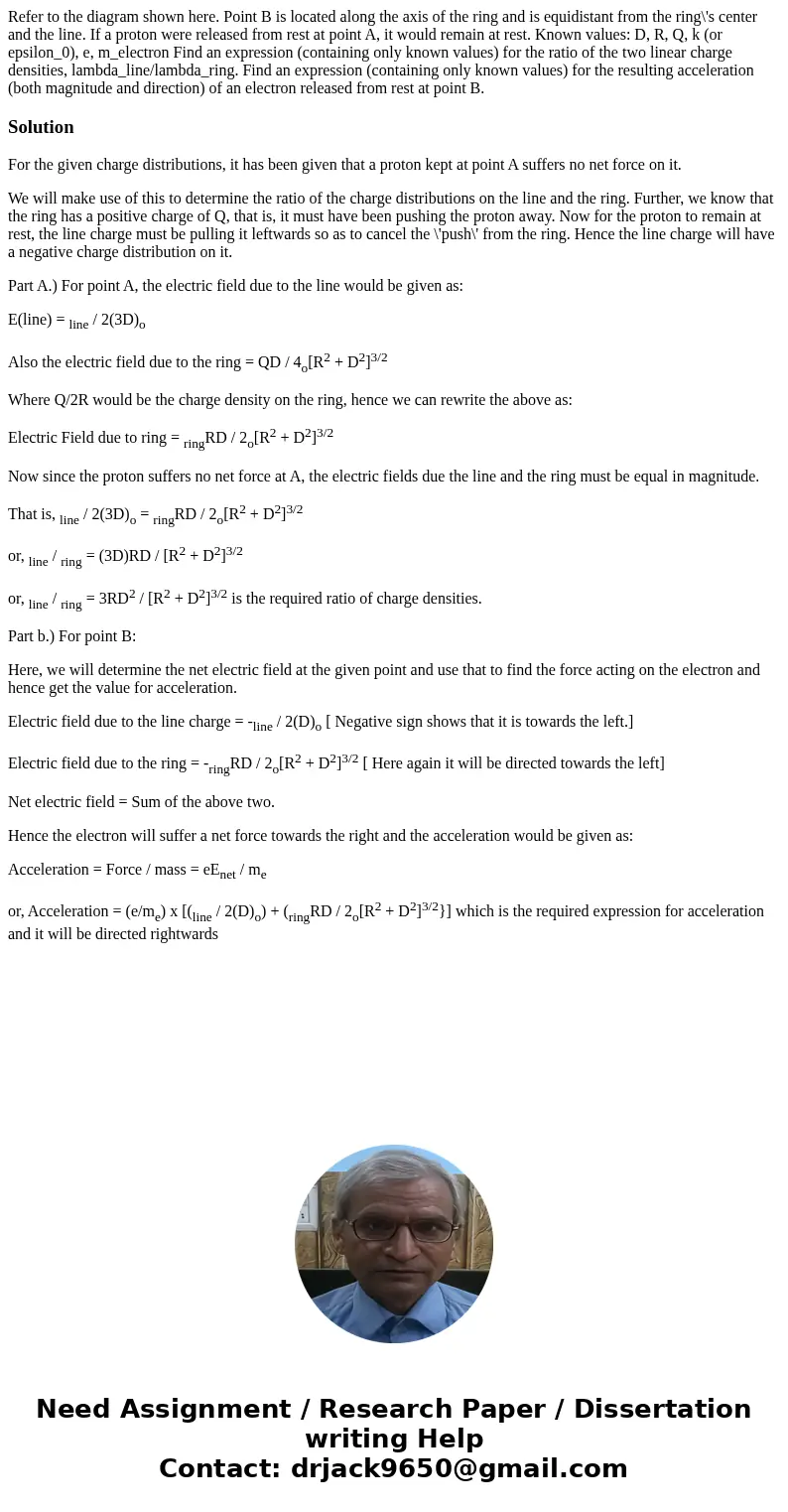Refer to the diagram shown here Point B is located along the
Solution
For the given charge distributions, it has been given that a proton kept at point A suffers no net force on it.
We will make use of this to determine the ratio of the charge distributions on the line and the ring. Further, we know that the ring has a positive charge of Q, that is, it must have been pushing the proton away. Now for the proton to remain at rest, the line charge must be pulling it leftwards so as to cancel the \'push\' from the ring. Hence the line charge will have a negative charge distribution on it.
Part A.) For point A, the electric field due to the line would be given as:
E(line) = line / 2(3D)o
Also the electric field due to the ring = QD / 4o[R2 + D2]3/2
Where Q/2R would be the charge density on the ring, hence we can rewrite the above as:
Electric Field due to ring = ringRD / 2o[R2 + D2]3/2
Now since the proton suffers no net force at A, the electric fields due the line and the ring must be equal in magnitude.
That is, line / 2(3D)o = ringRD / 2o[R2 + D2]3/2
or, line / ring = (3D)RD / [R2 + D2]3/2
or, line / ring = 3RD2 / [R2 + D2]3/2 is the required ratio of charge densities.
Part b.) For point B:
Here, we will determine the net electric field at the given point and use that to find the force acting on the electron and hence get the value for acceleration.
Electric field due to the line charge = -line / 2(D)o [ Negative sign shows that it is towards the left.]
Electric field due to the ring = -ringRD / 2o[R2 + D2]3/2 [ Here again it will be directed towards the left]
Net electric field = Sum of the above two.
Hence the electron will suffer a net force towards the right and the acceleration would be given as:
Acceleration = Force / mass = eEnet / me
or, Acceleration = (e/me) x [(line / 2(D)o) + (ringRD / 2o[R2 + D2]3/2}] which is the required expression for acceleration and it will be directed rightwards

 Homework Sourse
Homework Sourse